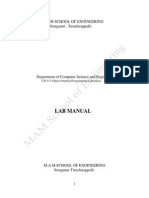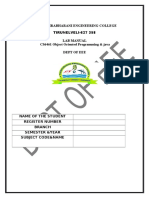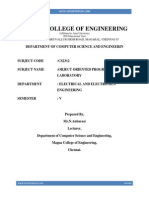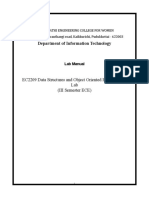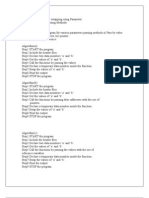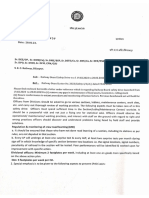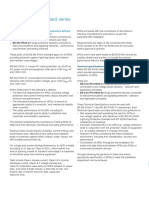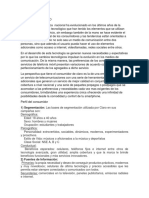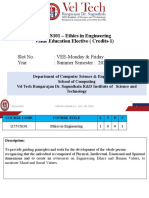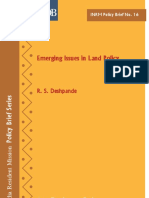0% found this document useful (0 votes)
10 views27 pagesC++ Practical Programs
The document is a laboratory manual for Object Oriented Programming using C++ at Adhiparasakthi College of Arts and Science. It includes various topics such as function overloading, classes and objects, passing objects to functions, friend functions, and operator overloading, along with corresponding algorithms and sample programs. Each section outlines the aim, algorithm, program code, and results of the exercises.
Uploaded by
d8750316Copyright
© © All Rights Reserved
We take content rights seriously. If you suspect this is your content, claim it here.
Available Formats
Download as DOCX, PDF, TXT or read online on Scribd
0% found this document useful (0 votes)
10 views27 pagesC++ Practical Programs
The document is a laboratory manual for Object Oriented Programming using C++ at Adhiparasakthi College of Arts and Science. It includes various topics such as function overloading, classes and objects, passing objects to functions, friend functions, and operator overloading, along with corresponding algorithms and sample programs. Each section outlines the aim, algorithm, program code, and results of the exercises.
Uploaded by
d8750316Copyright
© © All Rights Reserved
We take content rights seriously. If you suspect this is your content, claim it here.
Available Formats
Download as DOCX, PDF, TXT or read online on Scribd
/ 27







